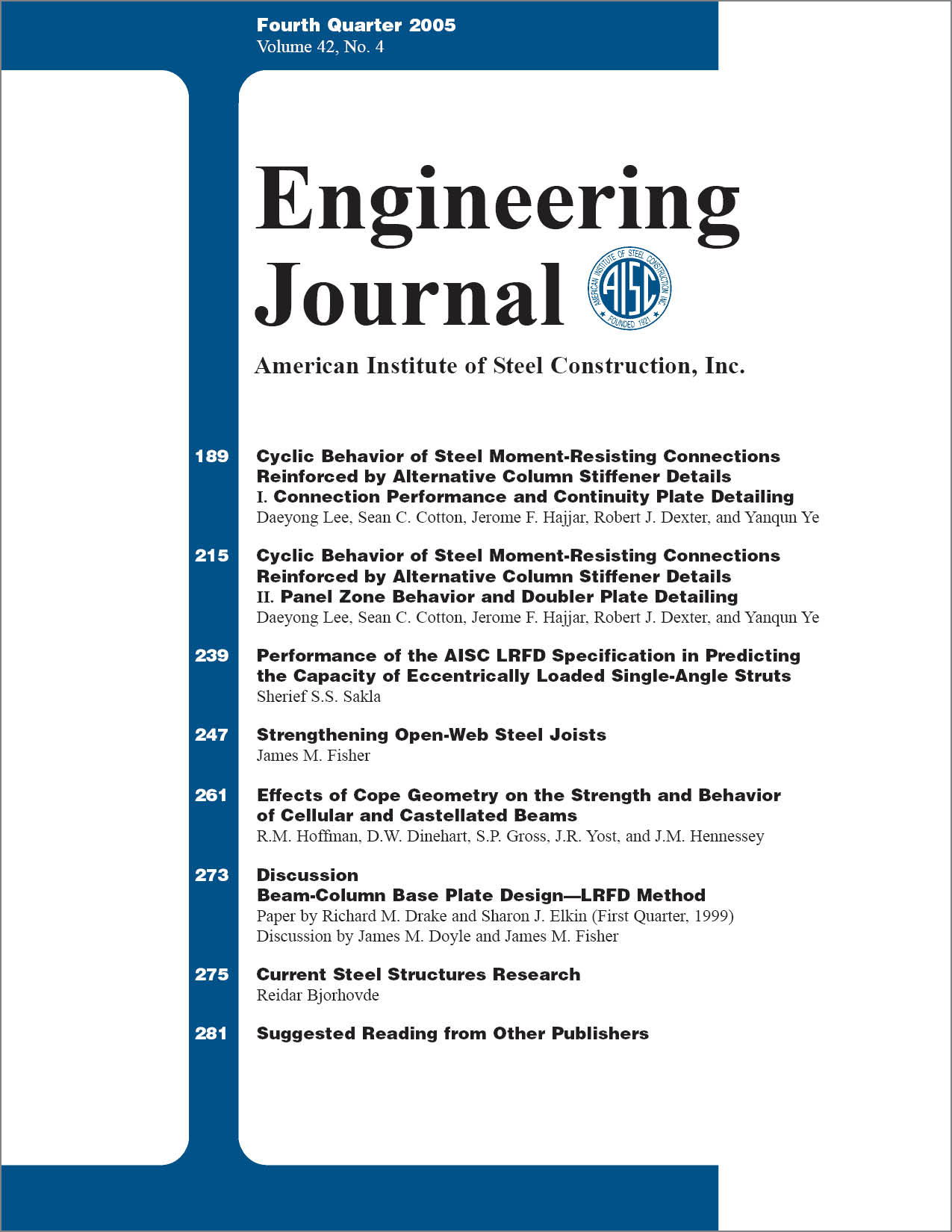Effects of Cope Geometry on the Strength and Behavior of Cellular and Castellated Beams
DOI:
https://doi.org/10.62913/engj.v42i4.859Keywords:
Beams and Flexural Members, Connections and JointsAbstract
This paper reviews an experimental and analytical investigation of the effect of cope geometry ( distance) on the strength and failure behavior of non-composite, doubly symmetric, uniformly loaded open web expanded beams. Thirty-six (36) beams, eighteen (18) cellular (circular openings) and eighteen (18) castellated (hexagonal openings), of various cope geometries and depths, each instrumented to measure load, strain and displacement, were tested to failure. A linear elastic finite element (FE) analysis for service loading conditions and a nonlinear FE buckling analysis were performed in parallel with the experimental testing program. The experimentally validated models were then extended to uncoped and intermediately coped beam geometries to investigate the effect of cope geometry on beam capacity and failure mode. Through this study, it was found that failure loads for the beams exceeded calculated design loads (ASD) by a minimum factor of 1.8 regardless of cope size or beam type. Further, cellular beams experienced less percent capacity loss with increasing cope size than did castellated beams.

